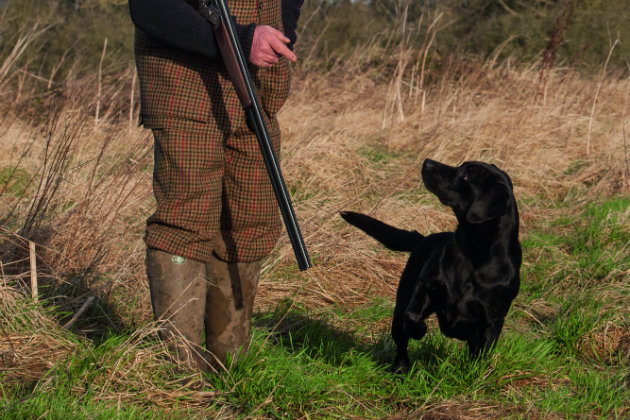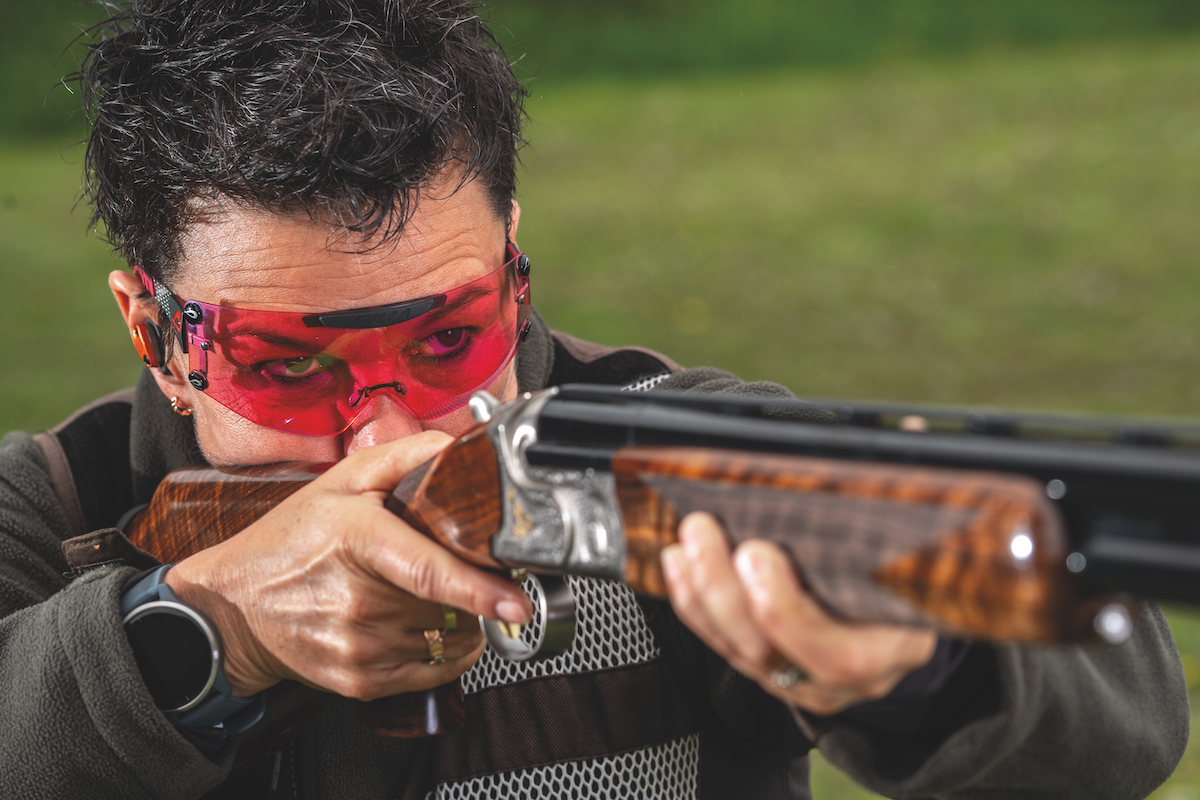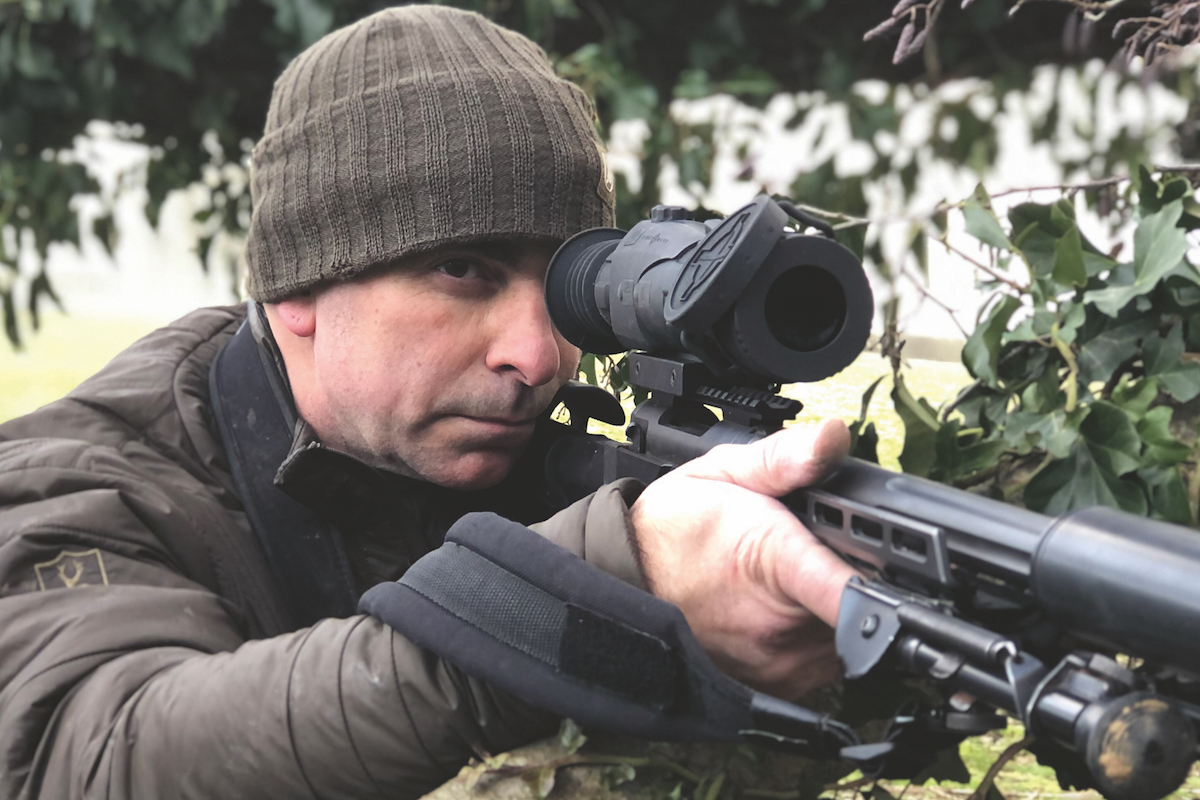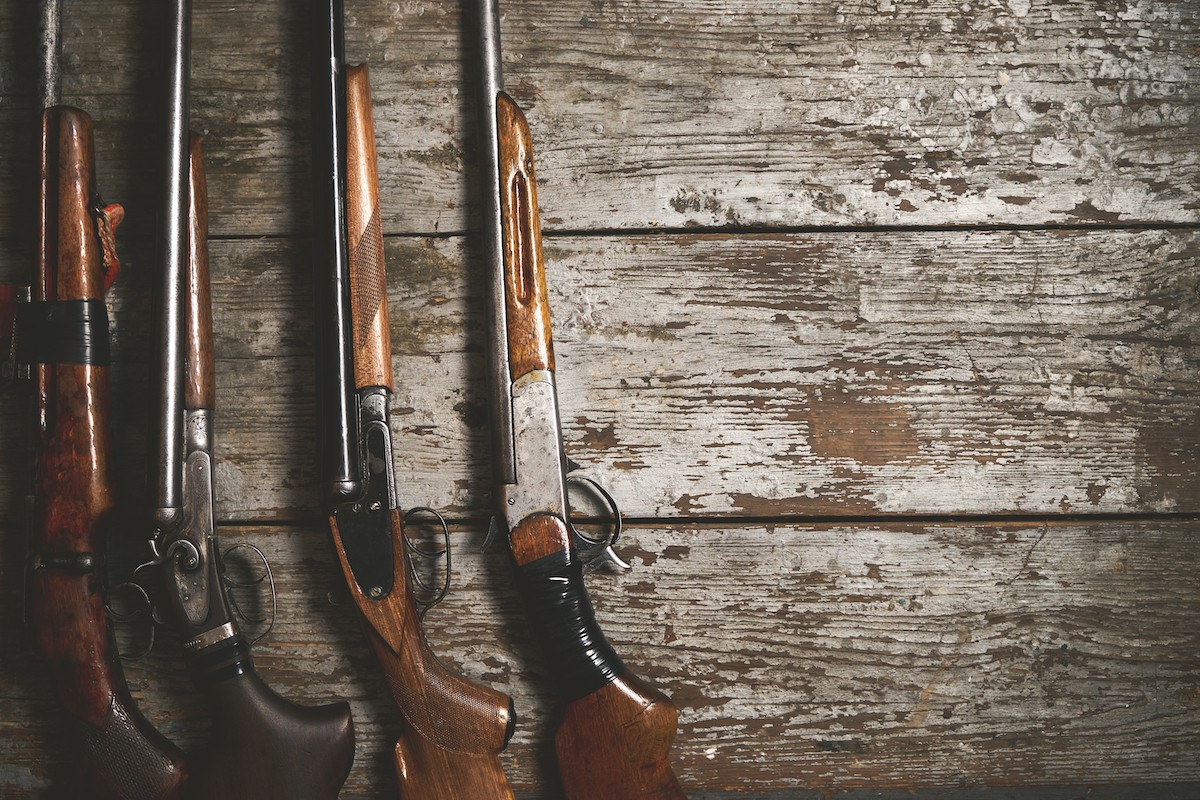So why would you want a lightweight gun?
When you’re out on a day’s roughshooting or spending a morning walking hedges the last thing you want is to be lugging around a heavy gun.

Churchill Utility shotgun
This gun is a spring-opening model, and is a five/six serial number, meaning it was built just before the Second World War when light guns of this type with short barrels were very popular.

- It’s got the Churchill quick-sighting rib on it, which is a raised rib unlike the more common modern flat or concave ribs. In theory it is a little like the rib on an over-under, offering a large single sight plain and appearing to elongate the short barrels.
- The gun is light, but the balance remains right on the hinge pin as with all classic English guns. It is quite lively in the hands, and these handling characteristics do require you to shoot with significant discipline.
- It is beautifully individually scroll and rosette engraved, and has well-figured and finished woodwork.
- This particular gun will have been used mainly for driven game, since it has improved and quarter choke.
- Nearly all Churchill guns had short stocks, so most have had the stock extended, as this one has.
- It could be happily used with 24gram cartridge loads. Unusually, this gun has 26½” barrels, and was built as an alternative to Holland & Holland’s Brevis shotgun, which was built around the same time.
- The Churchill offered a cheaper boxlock alternative to the high grade London gun.
- It’s also great value for money – an AYA Number Four costs a little more than this, and yet the Churchill will give you the pleasure of owning a classic English gun.
Browning Cynergy Hunter Light
This gun comes in various grades, where the more expensive type will have better quality wood and engraving.

The balance and feel of the guns and the internal mechanisms are identical.
The action body is made from a lightweight alloy, with the internal parts of the lock and the breech face made from steel, so there is no need to worry about reliability or wearing.
Browning guns normally have a 3″ chamber, but this being a lightweight gun it only has a 2¾” chamber.
As part of weight-saving measures, this gun has been back-bored, where the internal diameter of the barrels is increased.
- This not only reduces the overall weight of the gun, but helps to make the felt recoil more manageable.
- The recoil from firing the gun is not actually reduced, it is just felt in a different way as more of an extended push rather than a harsh kick.
- Overall barrel thickness is maintained, so there is no need to worry about safety or reliability issues. They come with Invecta multi-chokes, meaning you could quite happily use the gun for rough shooting with tight chokes, and then open it out for a driven day.
- They have a Schnabel fore-end and a pistol grip stock.
- Over-and-unders by design require a hollowed stock for the stock bolt which fixes the metal action to the wooden stock, but more has been removed here to reduce weight, bringing the gun to a little over 6lbs.
- All over-and-unders tend to be a little barrel heavy, and this is certainly accentuated on lightweight guns where you have lost weight in the action.
- On a light gun such as this however, this is not a bad thing, helping you with a smooth follow-through on the swing.
Webley & Scott 20-bore
This is an English-made Webley & Scott, featuring the name Galley & Son Ltd. King’s Lynn and Cambridge, on the rib.

It was particularly popular in the 1970s to have the name of the gun retailer put on the gun – indeed, we used to do the same thing.
This gun would have been made in the early 1970s, and is a 20-bore with 26″ barrels.
It weighs approximately 5½lbs, so it is very light, and like most Webleys has 2¾” chambers.
This would mean you could put heavier loads through it should you so wish, but I wouldn’t recommend it.
It is beautifully balanced, as you would expect in an English gun, though the shorter barrels will require a deliberate swing to maintain momentum.
It would come into its own when roughshooting, or walking-up with a dog as, being a side-by-side, it is comfortable to carry on the arm compared to a slightly more cumbersome over-under.








